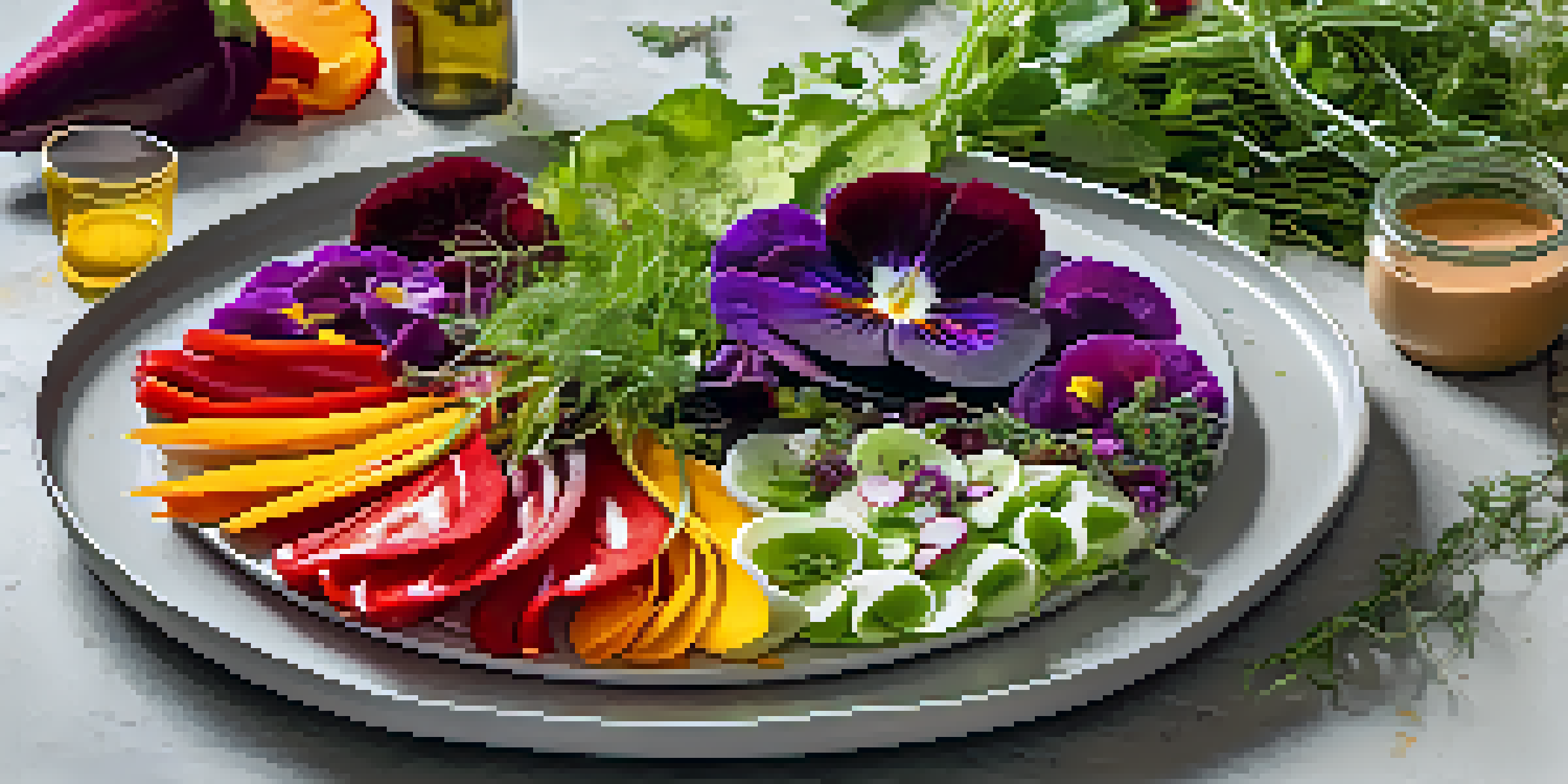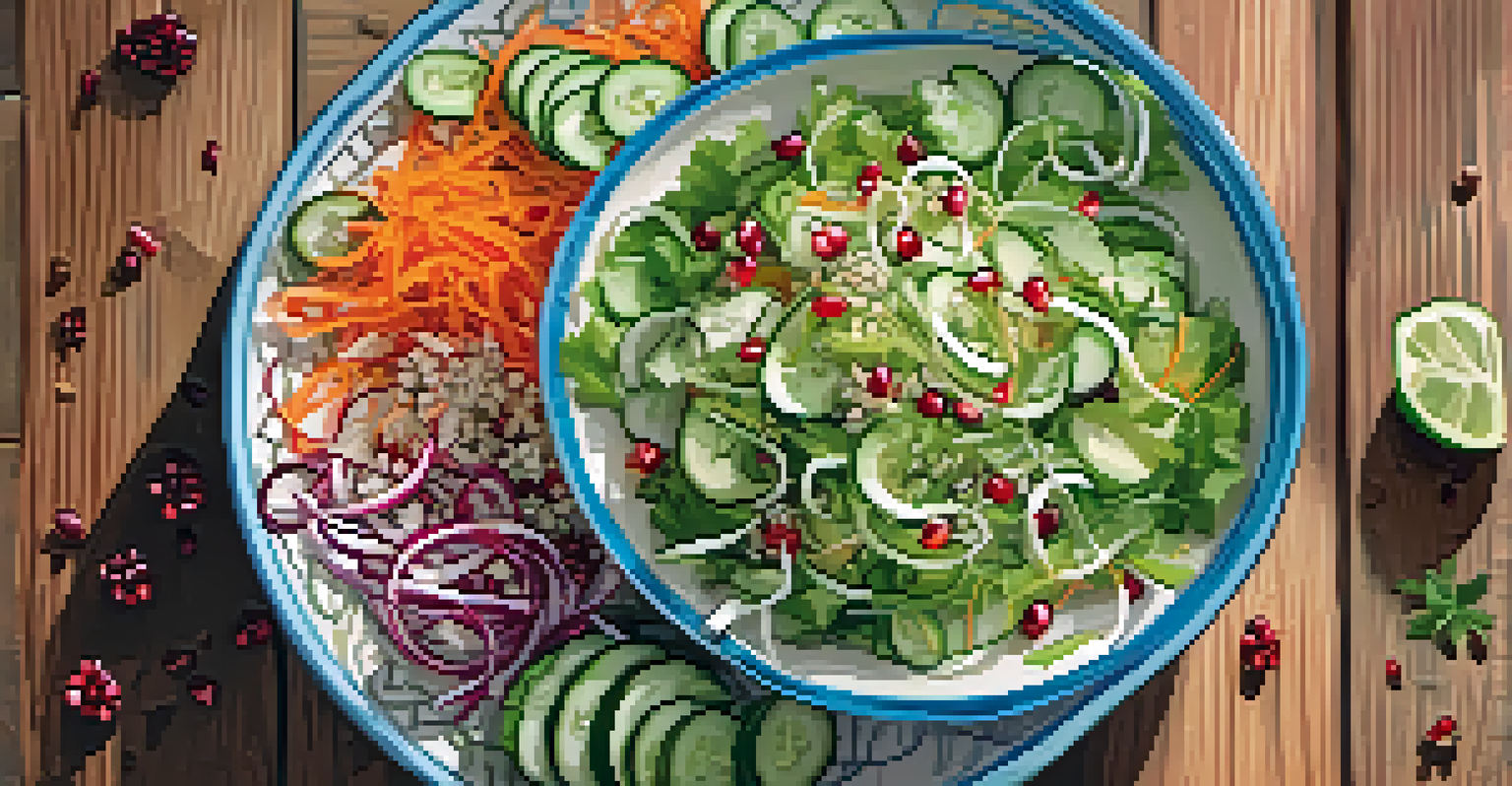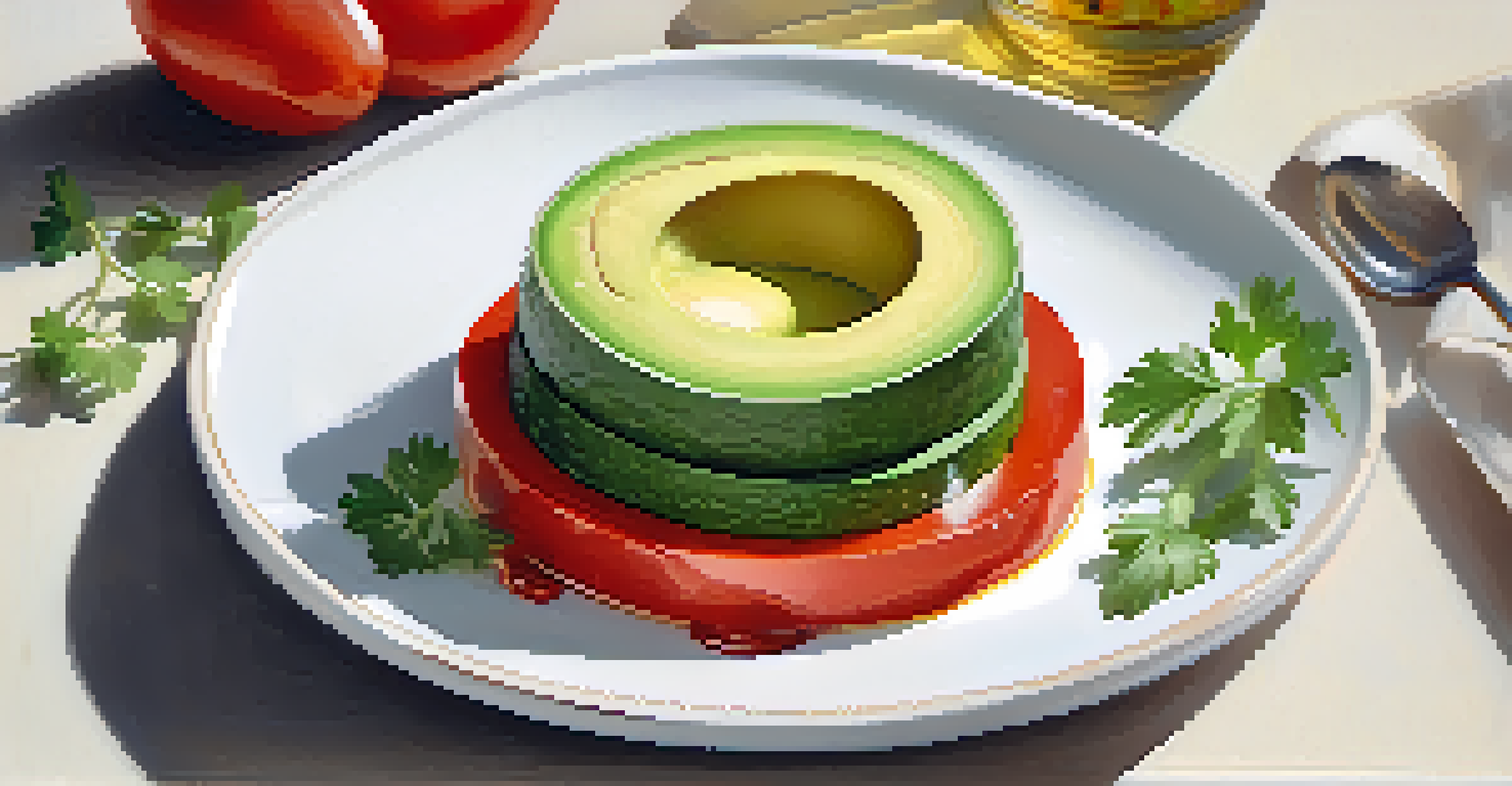Garnishing Techniques for Elevating Raw Food Presentations

Understanding the Importance of Garnishing Raw Foods
Garnishing isn't just about aesthetics; it's a crucial part of food presentation. For raw foods, which often lack cooking's visual appeal, garnishing can transform a simple plate into a work of art. Think of garnishes as the finishing touches that make a dish inviting and exciting.
Food is art; it's a way of expressing yourself.
When done right, garnishes can enhance the flavors of raw dishes, providing contrasting textures and colors that draw the eye. For example, adding a sprinkle of sesame seeds or a vibrant herb like cilantro can elevate a simple salad. This not only pleases the palate but also makes the dining experience more enjoyable.
Moreover, garnishing can communicate a dish's flavor profile even before the first bite. A drizzle of chili oil, for instance, hints at spice, while a dollop of avocado crema suggests creaminess. Understanding this connection between appearance and taste is key to mastering raw food presentation.
Choosing the Right Ingredients for Garnishes
Selecting the right garnishes is essential for enhancing raw food dishes. Fresh herbs, edible flowers, and colorful vegetables are excellent choices that add both flavor and visual appeal. For instance, microgreens can provide a delicate touch and a burst of freshness to a raw salad.

Consider the flavor profiles of your main ingredients when choosing garnishes. If you're working with a zesty citrus salad, a few slices of radish or some pomegranate seeds can add a sweet contrast. This synergy between main ingredients and garnishes can elevate the entire dish.
Garnishing Enhances Raw Dishes
Garnishing not only beautifies raw foods but also enhances their flavors and communicates their taste profiles.
Also, think about the seasonality of your ingredients. Using seasonal produce not only ensures freshness but also adds vibrancy to your presentation. Local edible flowers, for example, can bring a pop of color while supporting local farmers.
Techniques for Creating Eye-Catching Garnishes
There are several techniques you can use to create eye-catching garnishes that will impress your guests. One popular method is to use a vegetable peeler to create ribbons from carrots or cucumbers. These ribbons can be elegantly arranged on the plate, lending an artistic flair to your presentation.
The presentation of food is just as important as the taste.
Another technique is to create a vibrant salsa or relish that can be spooned atop your raw dish. Combining diced tomatoes, onions, and cilantro can add color and texture, making your raw dish more appealing. This not only enhances the look but also adds an explosion of flavor.
Don’t forget about height! Layering ingredients can create depth and make your presentation stand out. For example, stacking slices of avocado and tomato can create a visually appealing tower that draws the eye. Remember, engaging presentations often tell a story, so let your garnishes reflect the essence of your dish.
Playing with Colors and Textures in Garnishing
Color and texture play a vital role in garnishing raw foods. A plate with contrasting colors can be more inviting and appetizing. For example, pairing the vibrant green of fresh herbs with the rich red of sliced bell peppers creates a cheerful and appetizing display.
Textures also matter; combining crunchy elements with soft ones can create a more satisfying eating experience. Think of adding chopped nuts or seeds to a creamy raw dip for an added crunch. This contrast not only makes the dish more enjoyable but also visually interesting.
Choose Seasonal Garnishes Wisely
Selecting seasonal and fresh ingredients for garnishes can elevate both the visual appeal and flavor of your dishes.
Experimenting with color combinations can also evoke different emotions and sensations. Bright colors often suggest freshness and vitality, while deeper colors can be associated with richness and earthiness. Using a palette of colors can help convey the overall theme of your dish.
Incorporating Edible Flowers for a Stunning Look
Edible flowers are a fantastic way to elevate the presentation of raw dishes. They not only add a pop of color but also bring unique flavors that can enhance your meal. For instance, nasturtiums have a peppery taste that can complement a salad beautifully.
When using edible flowers, it's essential to ensure they are safe for consumption. Flowers like pansies, violets, and calendula are commonly used in culinary applications and can add an exquisite touch to your dishes. Just a few petals can transform an ordinary dish into an extraordinary feast for the eyes.
Additionally, the variety of shapes and sizes of flowers allows for creative placement on the plate. A scattering of flower petals can create a whimsical effect, making your raw food presentation feel more special. Don’t be afraid to experiment with different flowers to find the perfect match for your dish.
Using Sauces and Dips as Decorative Elements
Sauces and dips can serve as both a flavor enhancer and a decorative component in raw food presentations. A beautifully drizzled sauce can create striking patterns on the plate, adding dimension and interest. For example, a vibrant beet hummus can be swirled artistically around a bowl of fresh veggies.
Consider using squeeze bottles or spoons for more control over your designs. A gentle squeeze can create fine lines or dots, while a spoon can help you create broader strokes. This technique allows you to personalize each dish and showcase your creativity.
Creative Plating is Essential
Thoughtful plating techniques can transform your raw food presentations into stunning culinary works of art.
Moreover, the colors of your dips and sauces can highlight the freshness of your raw ingredients. A bright green avocado dip against a colorful array of vegetables can be both appetizing and visually stimulating. Remember, the key is to balance flavor and aesthetics seamlessly.
Final Touches: The Art of Plating Your Raw Foods
Plating is an art that can make or break your raw food presentation. Start with a clean, simple plate that allows your dish to shine. A white plate often works best as it provides a neutral background that emphasizes the colors of your food.
Arrangement is crucial; think about the flow and balance on the plate. Placing taller garnishes at the back and shorter items in the front creates a sense of depth. Using odd numbers for garnishes can also create a more dynamic look, making the dish visually appealing.

Finally, consider the overall theme of your meal when plating. If your dish is inspired by a specific cuisine or season, let that guide your presentation choices. By paying attention to these details, you can create a stunning raw food dish that’s not only delicious but also a feast for the eyes.